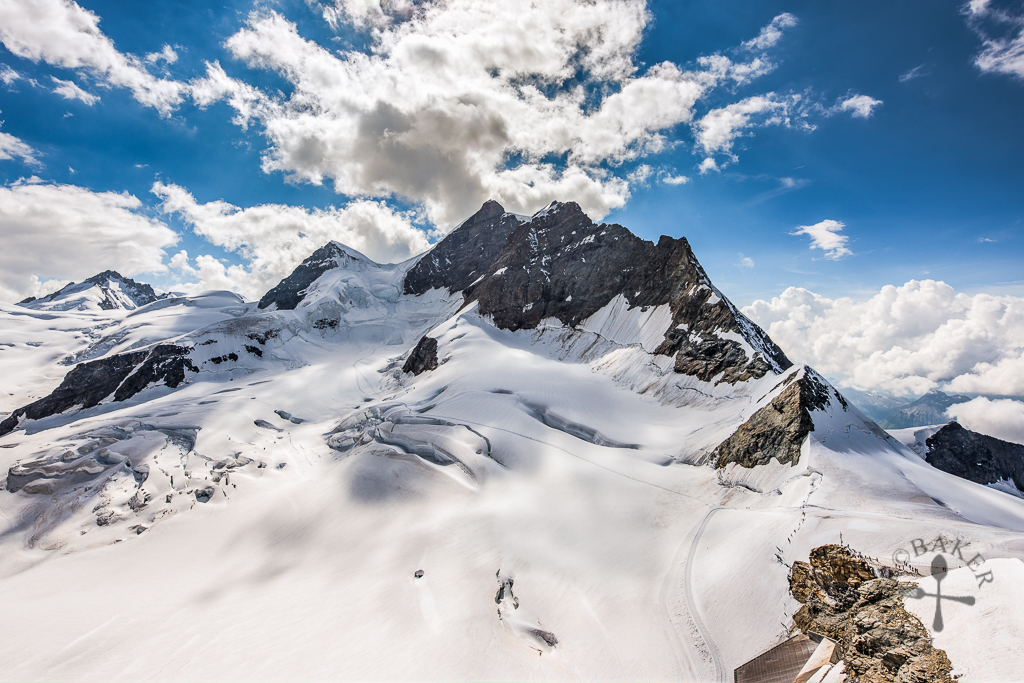
Hello there, I’m back with another travelogue on Switzerland! Visiting the alps is a must when one is in Switzerland and we managed to visit 2 during our trip – Jungfraujoch and Zermatt. Before we visited the alps, we had a lot of basic yet essential questions like where to stay, where can we find supermarkets, what to do etc. So I thought it’d be good to compile a FAQ to answer all these questions! We will first start with the Jungfrau region, then I will go more in-depth of the things we did there! Let’s go!
1) Where is the Junfrau Region?
The Jungfrau region starts at Interlaken, which is also the biggest town in the region. From there, you can take trains to many other smaller towns and villages in the alps and in the valleys, each of them unique and beautiful in their own way. Interlaken can be easily reached by train – there are two train stations at Interlaken – Interlaken Ost and Interlaken West. The train stations are 5 minutes by train and 20 minutes by foot apart, and most trains will pass by these two stations. Interlaken West is closer to the city center, but Interlaken Ost is the base to all the mountain railways.
2) What Can I Do at Jungfrau Region?
There are plenty of things that one can do at the Jungfrau region, so it’s impossible for me to list them all. But at the bare minimum, you should try to cover all these below!
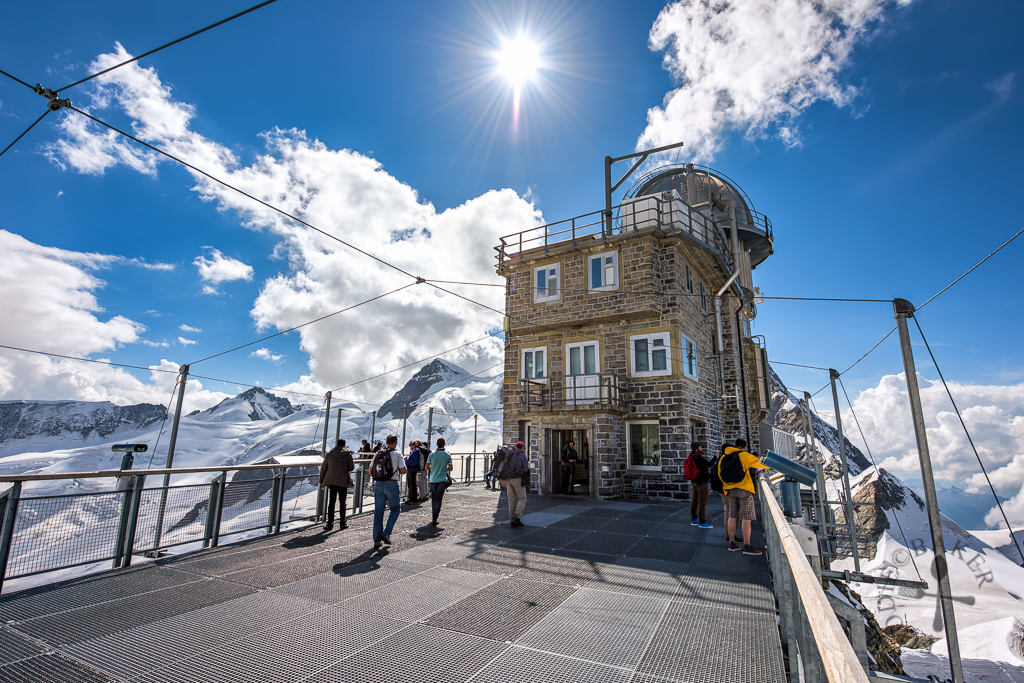
Top of Europe: Head up to the Top of Europe, Jungfraujoch on a clear day for one of the most beautiful views in the world! The Jungfraujoch is Europe’s highest train station at an altitude of 3,454 m (11,333 ft) above sea level. Inside, we visited the Ice Palace for some ice sculptures and shopped for chocolates at the Lindt Chocolate Shop. We also head out to the glacier and tried our best not to slipped on the ice haha. However, the best highlight has got to be the Sphinx, an observatory which brought us to 3,571 m (11,715 ft). We were treated to a 360 degrees panoramic view and an upclose view of Jungfraujoch, Eiger Mountain, and Mönch Mountain.
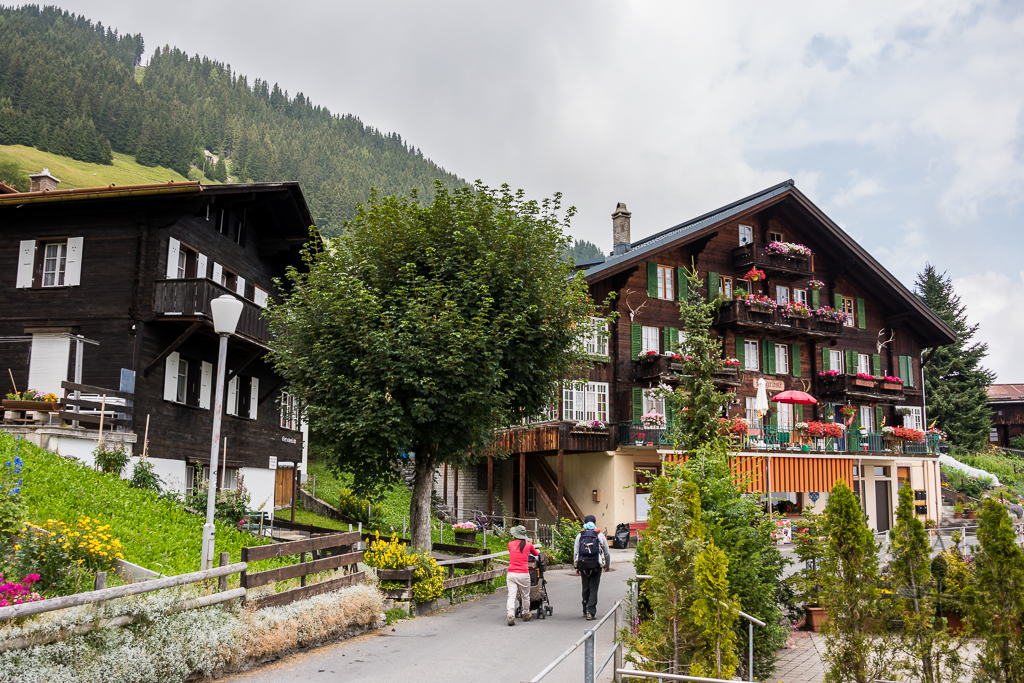
Top of Family: Mürren is a small, car-free and traditional mountain village at an elevation of 1,650 m (5,413 ft.) above sea level. Surrounded with many traditional houses, the terrain is gentle and suitable for families to take a nice stroll to explore the place and have a delicious lunch. I suggest combining a trip to Mürren with the Nordic Hike from Lauterbrunnen to Stechelberg, which is also suitable for families due to the flat terrain. From Mürren, it’s also possible to take a cable car up to Schilthorn.
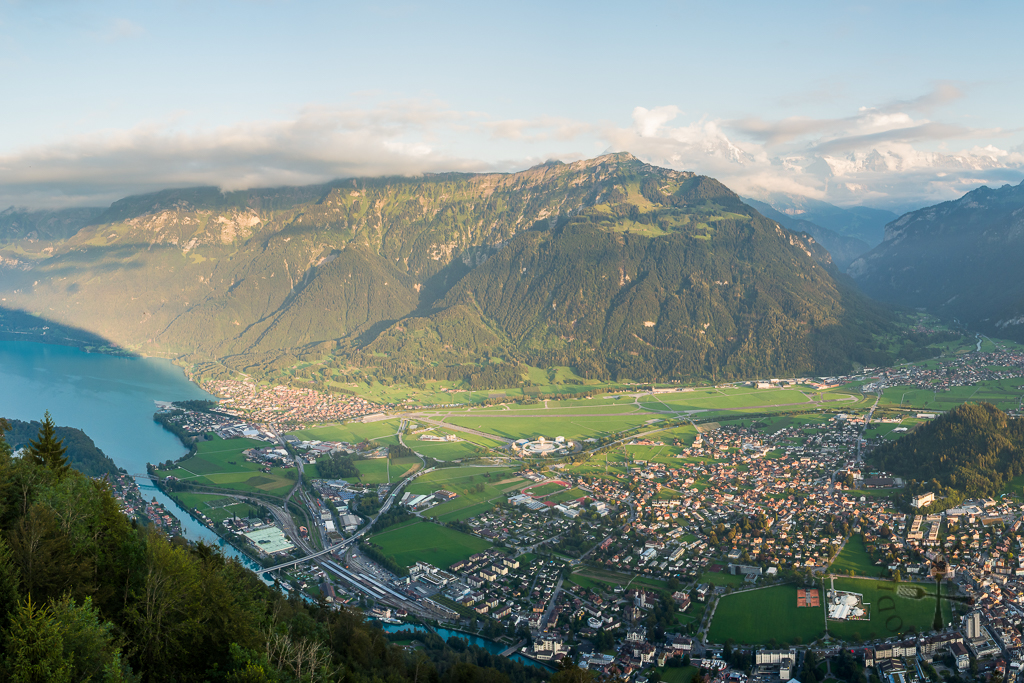
Top of Interlaken: For a spectacular top-down view of Interlaken and the lakes Brienzersee and Thunersee, Harder Kulm is the best place to go. We took the 10-minute funicular ride to the top and was lucky to get the seats right in front – and were rewarded with incredible views of Interlaken and the lakes as the funicular climbed to the top.
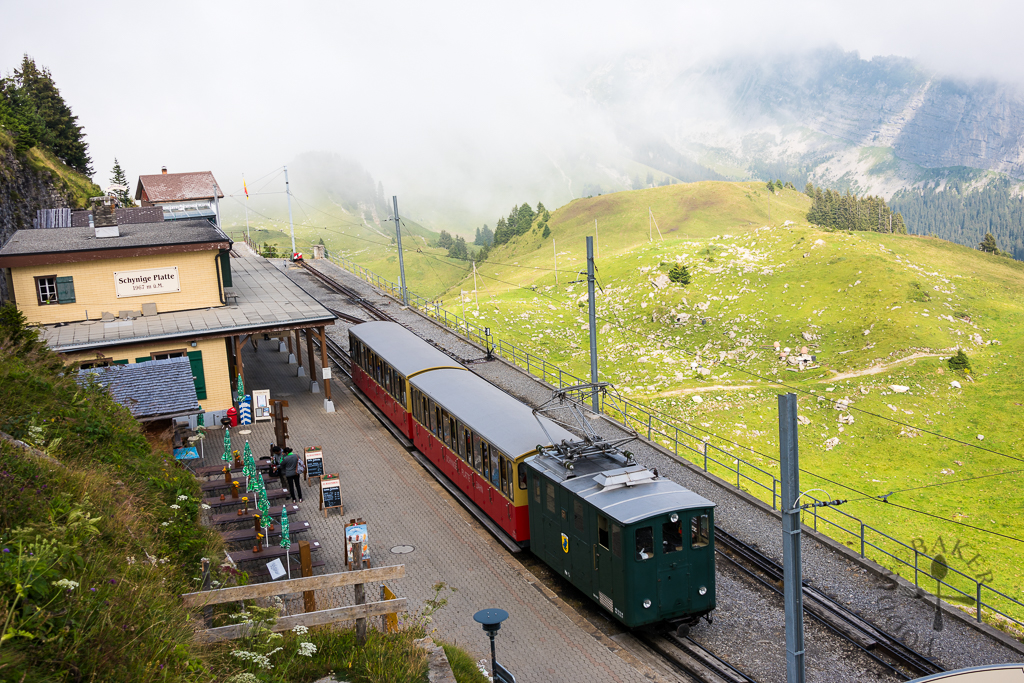
Top of Swiss Traditions: 67 bends, 4 tunnels, and a track of 7.2 kilometres long, the 50-minute train ride up from Wilderswil to Schynige Platte kept our heads busy as we were constantly looking from left to right and right to left again to take in the splendid views of Interlaken. It was only unfortunate that when we reached the tops, the cloud cover prevented us from seeing the mountains. Otherwise it would had been a lot more beautiful!
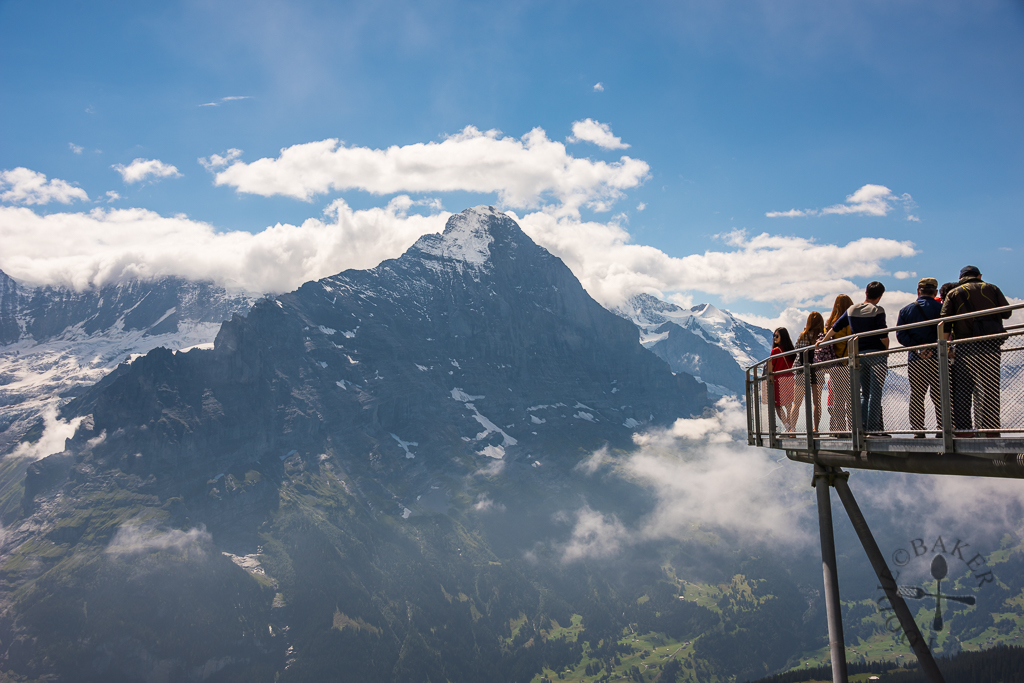
Top of Adventure: First is the name of a small summit in the Jungfrau region at 2,168 m (7,113 ft). It’s called the Top of Adventure because of the various exciting activities that can be done here. First (forgive the pun!), there’s the First Cliff Walk by Tissot, an approximately 40-metre long one-rope suspension bridge, which can be quite scary for those afraid of heights! Then there’s the First Flyer, Mountain Cart and Trottibike Scooter which will bring you down from First to Grindelwald, perfect for those who love speed! We also hiked to a beautiful lake Bachalpsee for lunch.
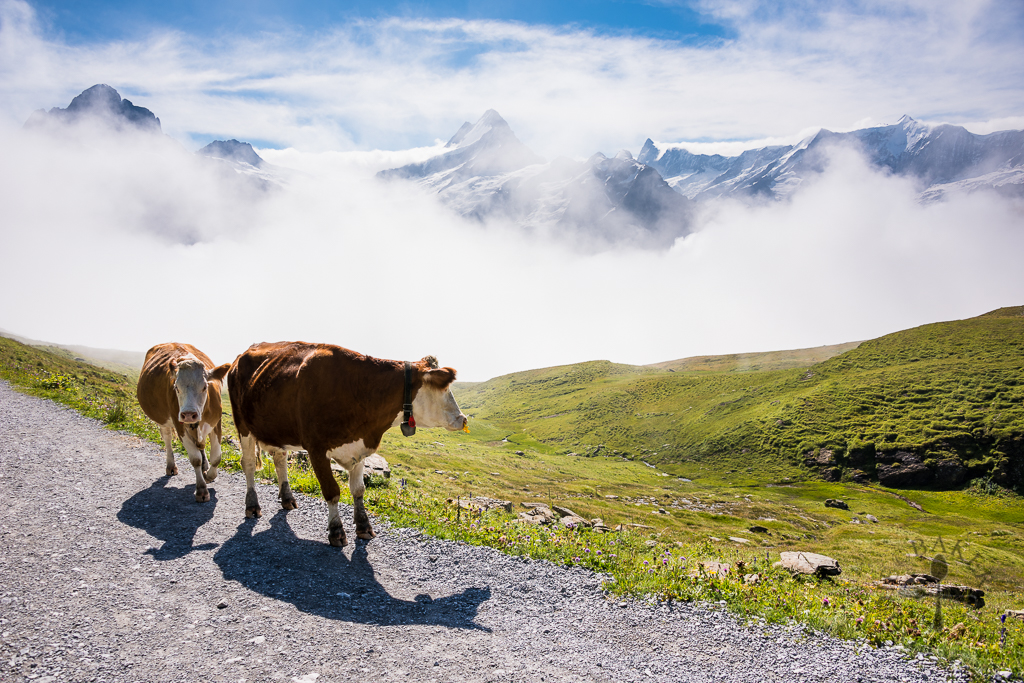
Hiking: If you have ample time there, keep hiking! There are more than 76 different hiking trails in Jungfrau region, ranging from easy hikes to those that need climbing harnesses, so there will definitely be one suitable for you and your family. During our trip there, we hiked No. 1 (First – Bachalpsee), No. 33 (Panorama Trail: Männlichen – Kleine Scheidegg), No. 47 (Royal Walk: Männlichen – Männlichen Gipfel), and from Lauterbrunnen to Stechelberg.
Scenic Rides: The train, funicular and cable car rides offer spectacular views of the Jungfrau region. Here are our top favourite rides that I strongly recommend one to take! 1) cable car ride up from Grindelwald to First (better photo opportunities on the way up as there’s an open window facing the alps); 2) train ride from Wengen to Kleine Scheidegg (sit on the right for best views – or sit on the left if you are taking the opposite direction); and 3) train ride from Grindelwald to Kleine Scheidegg (sit on the right for best views)!
3) Where to stay?
This is a question that many first-time travellers (including us) will have when visiting the Jungfrau region. Different towns and villages offer different views and experiences, so it’s hard to say where is the best place to stay. Below I’ve summarised the 4 most popular places that travellers will stay during their trip to the Jungfrau region.
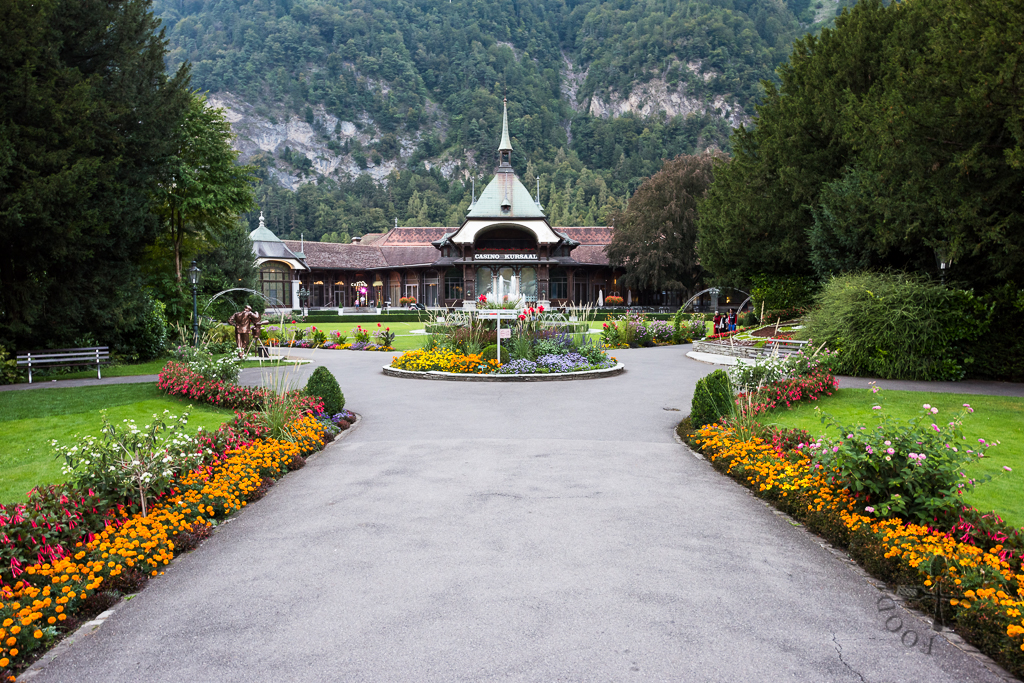
Interlaken is the biggest town in the Jungfrau region, hence it offers many accommodation, food and leisure. There’s a great deal of shopping (including luxurious ones), and even a casino, so if you have spare cash… you know where to go. In terms of food options, we noticed that there were quite a number of restaurants offering halal food, so muslim travellers may consider staying there for convenience. There is also a huge Coop supermarket with a Coop restaurant upstairs located just next to the Interlaken Ost train station – it’s perhaps the largest supermarket in the Jungfrau region. The supermarket is closed on Sundays (see the opening hours for the rest of the week here), but there are other smaller Coop minimarts in Interlaken that will be opened (and they close later on other days as well).
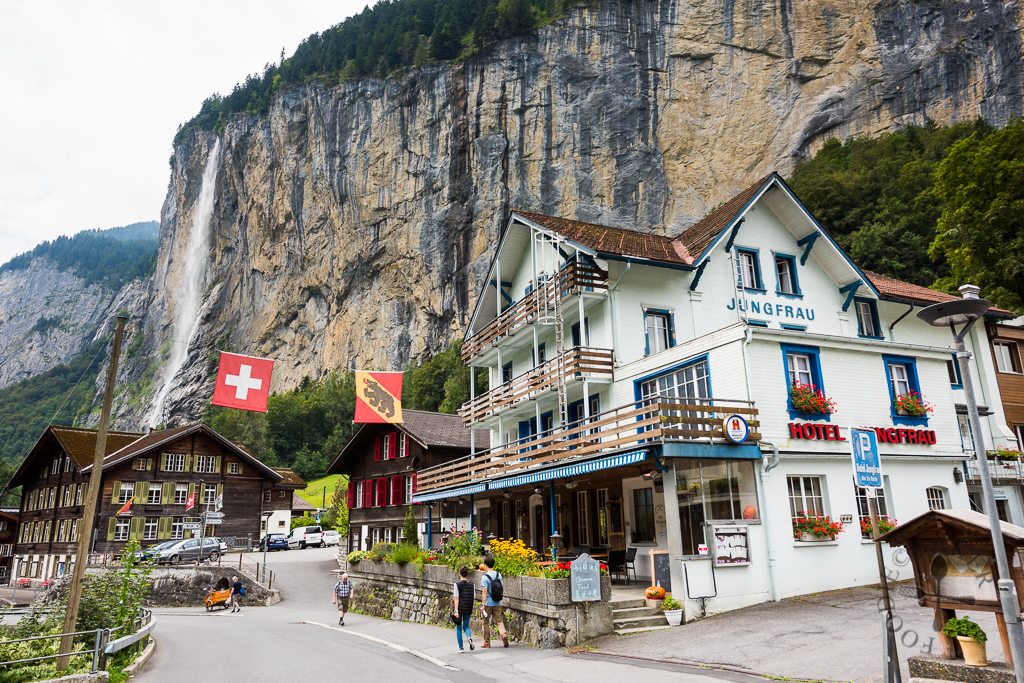
Lauterbrunnen is a village situated in the valleys at an altitude of 802 m (2,631 ft). It is easily accessible by train, cars and buses. Lauterbrunnen offers superb valley views and there is a total of 72 waterfalls in the Lauterbrunnen Valley, making it a great place for hiking. Getting to other places in the Jungfrau region is also relatively convenient. The Coop supermarket in Lauterbrunnen operates daily except Sundays (check here for the hours).
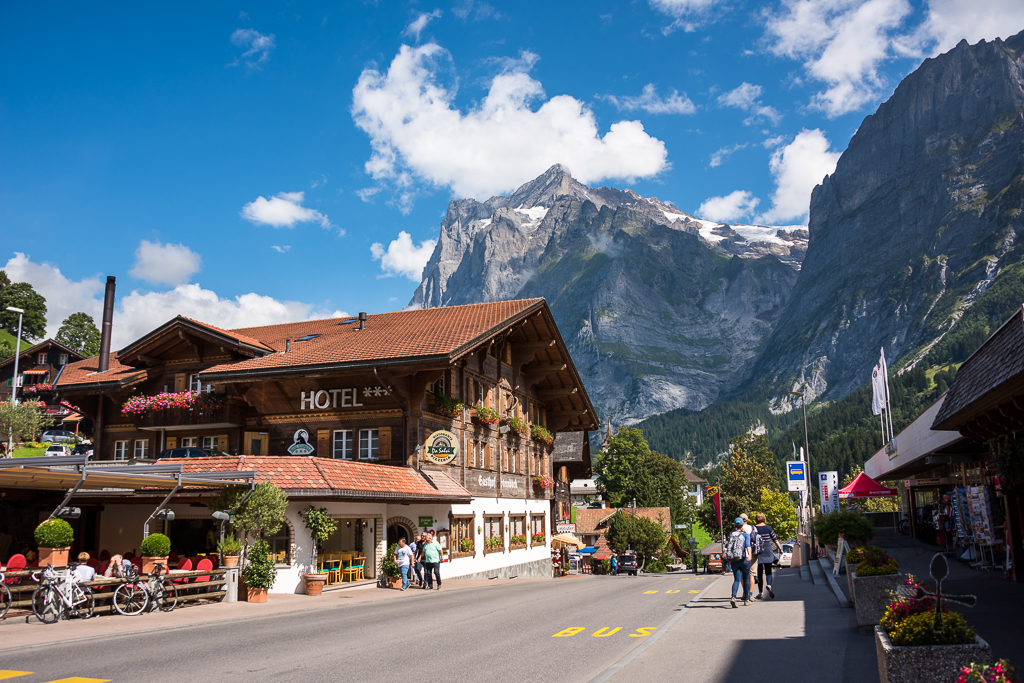
Grindelwald is the second largest town in the Jungfrau region. At 1,034 m (3,392 ft), it is the highest point in the region that can be accessed by a car (the rest can only be reached by trains). There is a direct train from Interlaken Ost station to Grindelwald station, as well as a Coop supermarket that is opened daily from 0800 to 1900 hours.
Grindelwald is the base to many hikes – such as to First, a small summit, and to Bachalpsee, a beautiful lake. It is also easy to reach the top of Europe, Jungfraujoch.
Being the second largest town, Grindelwald is bound to be busy and crowded. It will be a good place to stay if you are driving or want to stay in the mountains but at the same time, want some shops, restaurants and nightlife around.
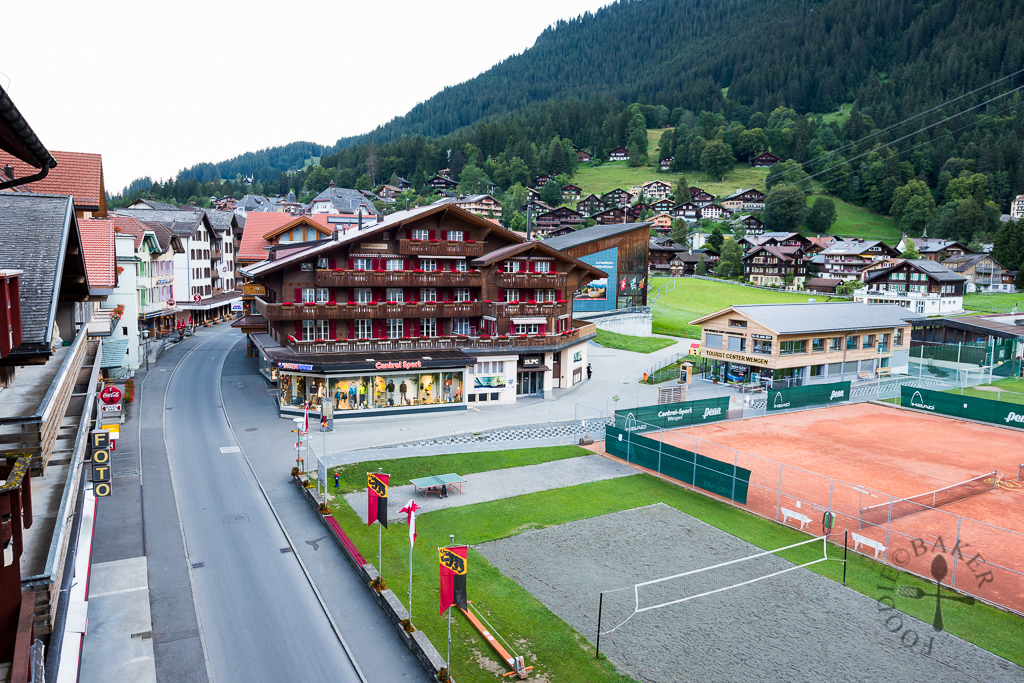
Wengen is a car-free village situated at an altitude of 1,268 m (4,160 ft). Getting there, however, requires a change of train at Lauterbrunnen (sit on the right side of the train on the way up for nice views of the valley). There is a Coop supermarket there that operates daily from 0800 to 1830 hours. Even though Wengen is small, it is a popular place for many travellers to base at, so it should be relatively easy to find accommodation there. There is quite a handful of restaurants and small shops in Wengen as well, but in general, Wengen is pretty quiet, especially at night, so it might not suit travellers who want a piece of nightlife.
Wengen is also the base to many hikes – such as to Männlichen – and Jungfraujoch is easily accessible.
Conclusion: We were debating whether to stay at Grindelwald or Wengen but we chose to stay at Wengen at the end because we liked the idea of a quiet, car-free village (yay to fresh air!). It is also the highest place to stay with all the basic necessities that we need (supermarket and restaurants). We loved our stay in Wengen and didn’t find the travelling a hassle at all. However, as businesses can apply and own vehicles (e.g. hotels using minivans to pick up their guests), we still saw a small number of vehicles in Wengen.
4) How Long to Stay in the Junfrau Region?
I’ll only be able to answer this question for the non-skiing season. For first-time travellers, I would recommend spending a minimum 3 days there. This will give you time to visit Top of Europe Jungfraujoch, see panoramic views from Schynige Platte and Harder Kulm, hike at Männlichen, Lauterbrunnen Valley, First and Bachalpsee, and explore a few small towns and villages. Spending more days there will also give you flexibility in your travel plans – such as only going up to Harder Kulm on a clear day.
Maximum? As long as your budget can afford!
5) Do I Need the Jungfrau Travel Pass?
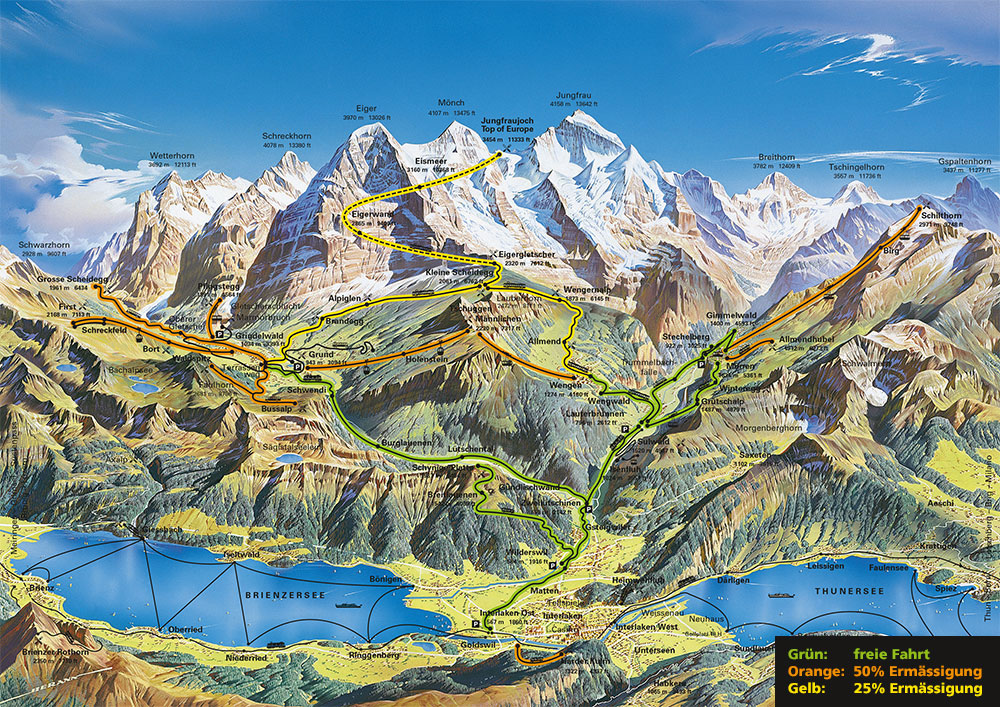
The Jungfrau Travel Pass allows unlimited travel within the Jungfrau region, except for the train ride up to Jungfraujoch and the cable car ride up to Schilthorn. The travel pass are offered as 3, 4, 5, and 6-consecutive days passes at CHF 180, 205, 230 and 255 respectively. If you hold the Swiss Travel Pass or the Swiss Half-Fare Card, the passes cost CHF 135, 155, 175 and 190 respectively.
As the passes are not cheap, it’s imperative to do some research before deciding to get them. Below is a price summary table I did up:

The journeys listed in the table above are the ones we took during our trip in the Jungfrau region. Without the Jungfrau Travel Pass, one would have to pay an additional CHF 207.20 or CHF 197.40 if one only has the Swiss Half-Fare Card or the Swiss Travel Pass. The cost to get the Jungfrau Travel Pass and the ride up to Jungfraujoch amounts to CHF 197, still cheaper! However, do note that the Jungfrau Travel Pass provides unlimited rides, so if you end up having spare time at the Jungfrau region, you can choose to go wherever you want! For us, we actually went up to Harder Kulm twice on two separate days as it was cloudy on the first day we went up. In addition, with the Jungfrau Travel Pass, you can choose a more scenic route to your destination (e.g. Wengen – Kleine Scheidegg – Grindelwald instead of Wengen – Zweilütschinen – Grindelwald).
In summary, the Jungfrau Travel Pass will be exceptionally beneficial for those planning to travel extensively in the Jungfrau region and want the flexibility to make changes anytime. If you are driving to Jungfrau region or are planning to stay only at the Jungfrau region, this is also a good pass to purchase to get around the region.
6) What to Bring?
Layers: Bring a few jackets so you can build on the layers, or at least one thick one for Jungfraujoch. The Jungfrau region is chilly in the mornings and evenings, but usually became warm enough in the afternoons that we had to shed our jackets. At the very top of Jungfraujoch it can get really quite cold! We were shivering a bit as we were exploring Jungfraujoch, and were so shocked when we saw some people in T-shirts and shorts!
Hiking boots: Wear a good pair of hiking boots you have broken in so that you can hike as much as you want.
Sun protection: Hats, sunglasses and sunblock are a must when visiting the Jungfrau region. At high altitudes, it’s extremely easy to get sunburnt – so wear sun protection at all times.
7) Other Useful Information
Jungfrau Railways Timetable: This timetable allows you to search for train, cable and bus connections within the Jungfrau region and will be immensely useful when you plan your travels within the region.
Jungfrau Railways Live Webcams: Before heading up to Jungfraujoch, First or Harder Kulm, check out the live webcams which will show you the weather conditions of the place at that time. If you see the cloud cover is very thick, consider changing your plans or go there later so you will not be disappointed!
Weather Forecast: You can also check the weather forecast for the day and upcoming days to see if you need to change your travel plans. We used the websites MeteoSwiss and MeteoNews extensively during our trip in Switzerland.
8) Our 3-Day Itinerary at Jungfrau Region
If you are planning to head to Jungfraujoch, here is our itinerary for your reference! We went up to Harder Kulm twice as we couldn’t take nice photos because of the rain and cloud cover.
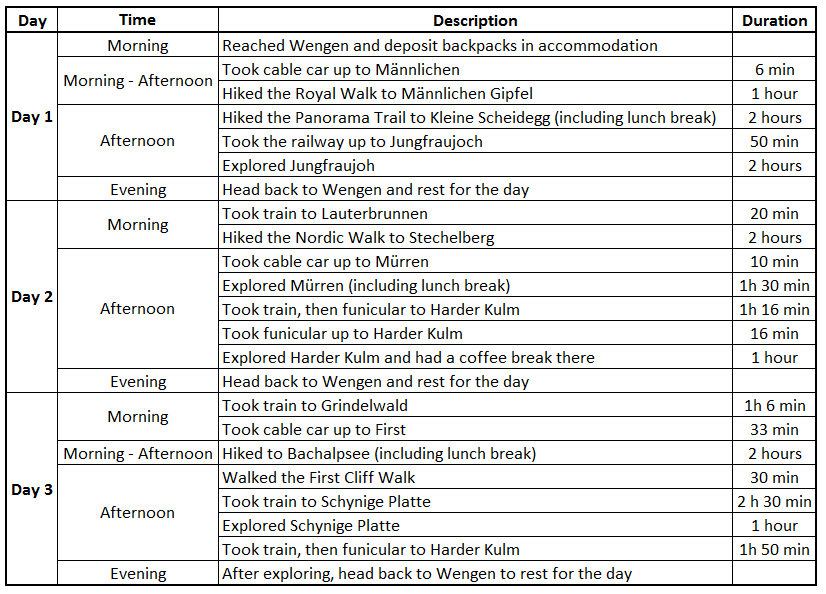
And that’s all for now! I hope all these information and our itinerary will be useful in your planning for your Jungfrau trip 🙂 Upcoming posts will be our in-depth posts of our adventure in the Jungfrau region, stay tuned!
Full disclosure: We were truly honoured and blessed to be hosted by Jungfrau Railways during our trip. All experiences and photos are still our own!
| ← Previous travelogue: Switzerland FAQ | Switzerland Itinerary (includes all the links to other Switzerland posts) | What’s next: Männlichen, Panorama Trail Hike and Top of Europe, Jungfraujoch → |
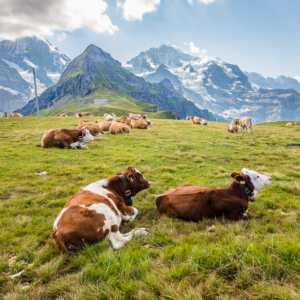 | 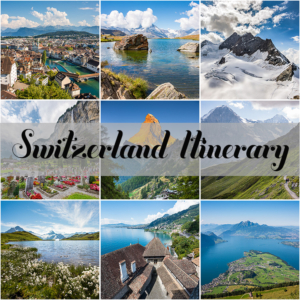 |  |
ChgoJohn says
Your opening shot is stunning, Jasline. Just stunning! You do tour some of the world’s beautiful places and I, for one, am grateful that you always take us along. Thank you.
Raymund says
You should have done this 2 years earlier before I visited Switzerland such tips! Definitely this will be handy the next time I go back even its my second home I learn new things from you
Bam's Kitchen says
Wow! Great post with loads of great information and of course National Geographic quality photos. Did you enjoy any Swiss chocolate whilst you were there?
Jasline N. says
Thanks for the compliments Bobbi! We ate some but they were really too expensive!
Mummy Ed says
This is a really informative post, and you have such lovely photos! We went in June, staying in the Lauterbrunnen valley, and it rained most of the time, which was really unfortunate. Also we were there in early June so the train from Wilderswil to Schynige Platte wasn’t even operating yet and many restaurants in Zermatt were closed. I will definitely have to go back again because Switzerland is probably the most scenic country!